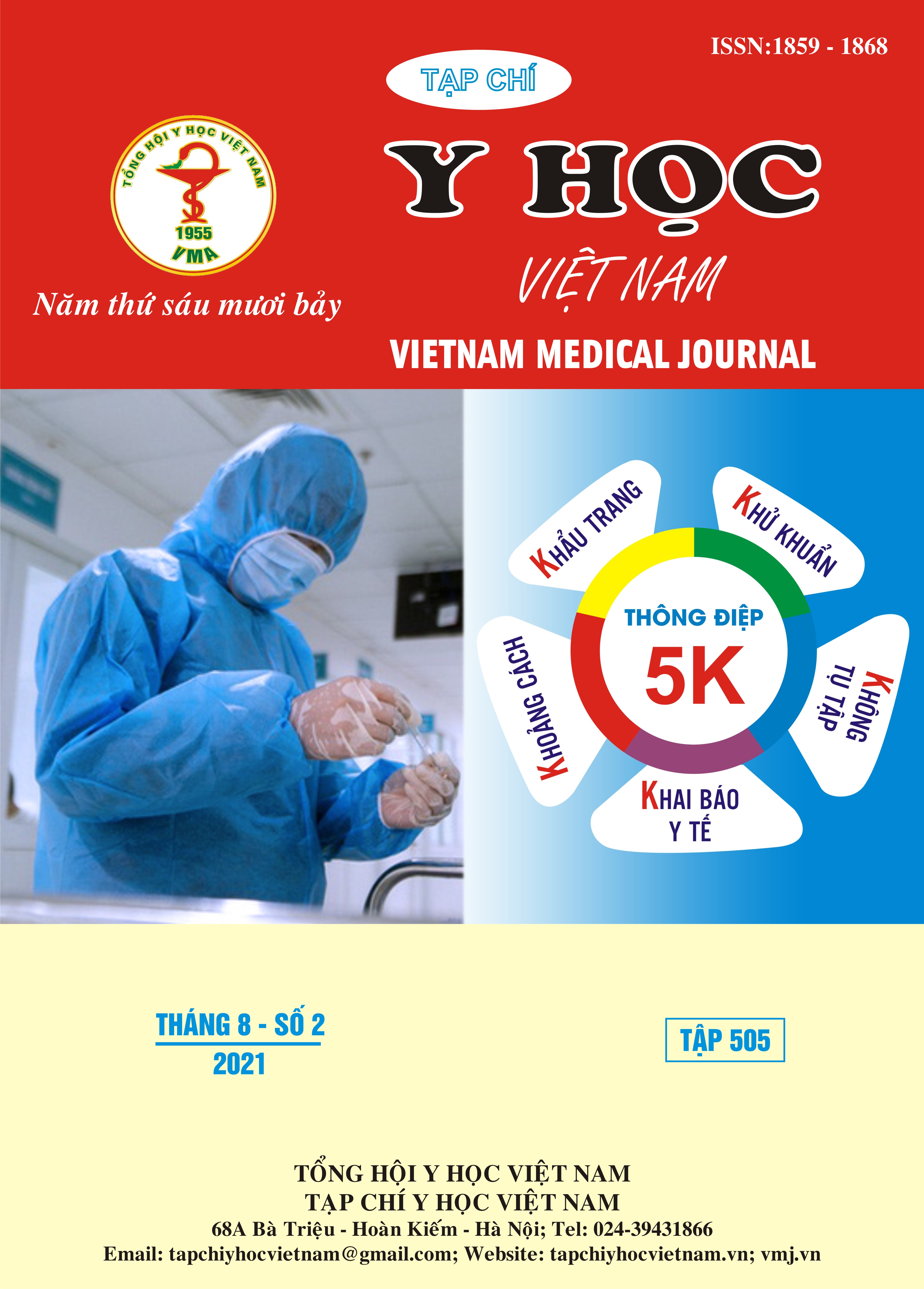TO SURVEY PATTERNS OF NASAL SEPTAL DEVIATION AT CHO RAY HOSPITAL
Main Article Content
Abstract
Objective: to investigate patterns of deviated nasal septum at Cho Ray hospital from 9/ 2019 to 9/ 2020. Methods: case series report. There arc 250 nasal septal deviation cases from September, 2019 to September, 2020. Nasal sepal deviation (NSD) is diagnosed by clinical examination and nasal endoscopy. The pattern of NSD is followed by Mladina’s classification. Results: The type I of NSD (20%) is the most common. The next rate of NSD consist of type V(19,2%), type II (16,8%), type I (14%), type VII (11,6%) and type IV (7,6%). In addition, patients have headache (63,2%), nasal discharge (60,4%), sneeze (54,4%) and nasal obstruction (30,4%) with nasal septal deviation. Conclusions: There arc a lot patterns of NSD which the most common is nasal septal spur (type I) or NSD at nasal vale region.
Article Details
Keywords
deviated nasal septum, nasal septal spur, nasal septal deformity
References
2. Elahi M. M. et al. (2000), "Septal deviation and chronic sinus disease", American journal of rhinology. 14 (3), pp. 175-180.
3. Elahi M. M. et al. (1997), "Paraseptal structural changes and chronic sinus disease in relation to the deviated septum", The Journal of otolaryngology. 26 (4), pp. 236-240.
4. Low W. et al. (1992), "Submucous resection for deviated nasal septum: a critical appraisal", Singapore medical journal. 33 (6), pp. 617-619.
5. Min Y. et al. (1995), "Prevalence study of nasal septal deformities in Korea: Results of a nation-wide survey", Rhinology. 33 (2), pp. 61.
6. Mladina R. et al. (2008), "Nasal septal deformities in ear, nose, and throat patients: an international study", American journal of otolaryngology. 29 (2), pp. 75-82.
7. Rao J. J. et al. (2005), "Classification of nasal septal deviations-Relation to sinonasal pathology", Indian J Otolaryngol Head Neck Surg. 57 (3), pp. 199-201.
8. Sam A. et al. (2012), "Nasal septal deviation and external nasal deformity: a correlative study of 100 cases", Indian Journal of Otolaryngology and Head & Neck Surgery. 64 (4), pp. 312-318.
9. Šubarić M. et al. (2002), "Nasal septum deformities in children and adolescents: a cross sectional study of children from Zagreb, Croatia", International journal of pediatric otorhinolaryngology. 63 (1), pp. 41-48.
10. Takahashi R. (1971), "Malformations of the nasal septum", A collection of ear, nose and throat studies. Kyoya Co. Ltd, Tokyo, pp. 1-87.
11. Wee J. H. et al. (2012), "Classification and prevalence of nasal septal deformity in Koreans according to two classification systems", Acta oto-laryngologica. 132 (sup1), pp. S52-S57.


